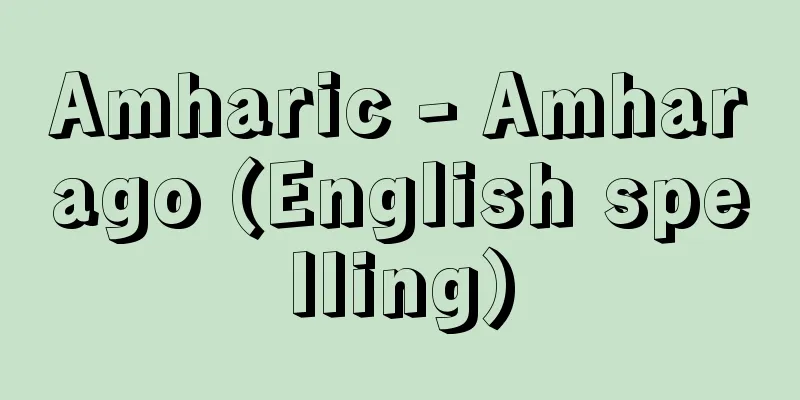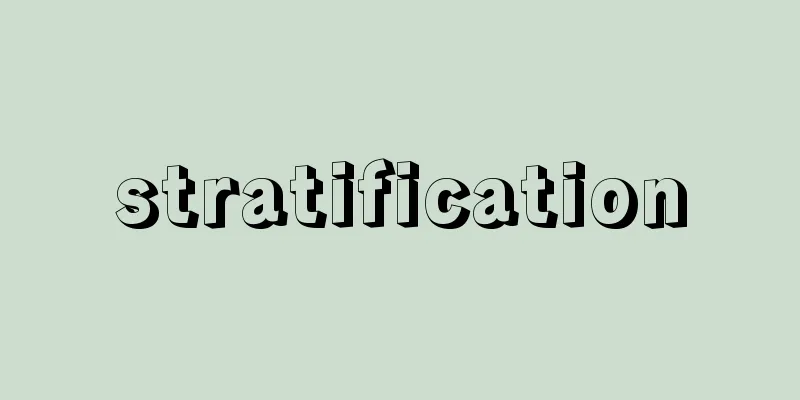Amharic - Amharago (English spelling)

|
One of the languages used in Ethiopia. Currently, more than 70 languages are spoken in Ethiopia, but Ethiopia has the largest number of native speakers (about 15 million). It belongs to the Semitic family of languages. It replaced Classical Ethiopian (Ge'ez) and was used as the royal court language of the kingdom from the 13th century onwards, but it was only from the end of the 19th century that it established itself as a written language and developed its own literature. The characters are a modified version of those used in Ge'ez, and are syllabic like Japanese kana, written from left to right. It has gradually spread from its original location in the central highlands of Ethiopia to the entire country as a common language. The literacy rate, which was extremely low, has also been improving in recent years due to a strong literacy movement. [Yoichi Tsuge] FeaturesIt has 27 consonants and 7 vowels, but is characterized by a group of consonants (ejectives) that are pronounced with tension in the larynx. Compared to Tigrean and Tigrinya, both of which are Semitic languages, it has been significantly influenced by the indigenous Cushitic language, losing the rich guttural sounds unique to Semitic languages and containing many Cushitic loanwords. Syntactically, it is different from the original Semitic language in that modifiers precede the modified word and the basic word order is subject-object-verb, which are very similar to Japanese. The verb conjugation system retains relatively original Semitic characteristics. [Yoichi Tsuge] [References] | |Source: Shogakukan Encyclopedia Nipponica About Encyclopedia Nipponica Information | Legend |
|
エチオピアで使用される言語の一つ。現在エチオピアでは70以上といわれる多数の言語が話されているが、そのなかで最大の母語人口(約1500万人)をもつ。系統的にはセム語族に属する。古典エチオピア語(ゲエズ語)にとってかわって、13世紀以降王国の宮廷語として用いられるようになったが、書きことばとしての地位を確立し、独自の文学を発展させたのは19世紀末からである。文字はゲエズ語に使われた文字に改変を加えたもので、日本のかなと同様の音節文字で、左から右に書く。元来のエチオピア中部高原地帯から、共通語として漸次全土に広まっている。またきわめて低かった識字率も、近年の強力な識字運動に伴い向上をみている。 [柘植洋一] 特徴27子音と7母音をもつが、喉頭(こうとう)の緊張を伴い発音される一群の子音(放出音)が特徴である。同じセム系でも北部のティグレ語やティグリニア語と比べて、土着のクシ語の影響が著しく、セム語固有の豊富な喉音(こうおん)は失っており、語彙(ごい)もクシ語からの借用語が多い。また統語面でも、セム語本来のものと異なり、修飾語が被修飾語に先行するとか、基本的語順が主語―目的語―動詞であるといった、日本語とよく似た特徴をもつ。動詞の活用組織は比較的本来のセム語的特徴をとどめている。 [柘植洋一] [参照項目] | |出典 小学館 日本大百科全書(ニッポニカ)日本大百科全書(ニッポニカ)について 情報 | 凡例 |
<<: Amhara people - Amhara (English spelling)
Recommend
Okea, J. - Okea
… In the 20th century, people of common origins f...
Sterilization prevention - Funinboujo
A method of pest control in which either or both m...
shuraṭa (English spelling) shurata
...The term refers to the police or police office...
Oguri Fuyou
Novelist. Born in Aichi Prefecture. Real name Kat...
Enokimi - Enokimi
…Years of birth and death unknown. Also known as ...
Kanoko Okamoto - Kanoko Okamoto
Novelist and poet. Born in Tokyo on March 1, 1889...
ISRO - ISRO
Indian Space Research Organisation (ISRO) is a nat...
Asian bell frog - Asian bell frog
...Sometimes they turn over with the red ventral ...
Choi Myeong-gil (English spelling)
1568‐1647 A Confucian scholar and official of the ...
Asianism
A trend in modern Japan's foreign policy seen ...
skittle
…Instead of playing outdoors, a wooden lane is la...
Function generator
…In a narrow sense, it refers to a standard signa...
Rattle
[1] (adv.) (Often used with "to". Also w...
Lutong
...They are called langur monkeys because of thei...
"The Land of England" - English Land
…He served as president of the International Geog...









